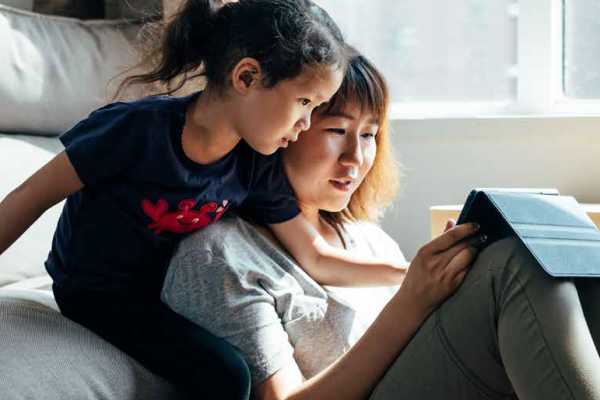Published on the 27/06/2019 | Written by Heather Wright

Marketplaces and buy now pay later drive surge to online…
The face of e-commerce across Australia and New Zealand is evolving as new platforms and technologies, including BNPL, virtual assistants, visual search and augmented reality drive ever more growth in the market.
New reports from Australia Post and NZ Post, show Australians and Kiwis are continuing to embrace online shopping with gusto, with both countries clocking record figures for spend last year.
New Zealanders spent $4.2 billion online in 2018, up 16 percent on the previous year, while total online spend by Australians topped $27.5 billion, a 24 percent year on year increase. That puts online spending at 10 percent of Australia’s total retail spend – a figure reached two years earlier than expected. In New Zealand, online now accounts for 8.9 percent of all retail spending.
“BNPL transactions have seen a ‘staggering’ rise in the past year.”
Both reports note the growing trend of marketplaces and buy now, pay later (BNPL) as key drivers in the e-commerce surge.
Marketplaces are increasingly dominating the online shopping experience (up 31.2 percent year on year in Australia, and 10 percent in NZ), as consumers look for the best deals and convenience of a one-stop shop, with Australia Post’s Inside Australian Online Shopping Report noting more sellers are also turning to marketplaces to broaden their customer base and grow brand awareness.
“Marketplace platforms are a simple, low cost way for businesses to get into the world of online retail shopping,” NZ Post says. “There’s no need to create your own shopping-enabled website, the platform manages all payment transactions. Businesses just need to promote their products and fulfil orders.”
Most platforms do, however, charge a listing fee or a success fee. But NZ Post says marketplaces are a good customer acquisition opportunity for many businesses, enabling them to catch the attention of customers and drive them to their own site.
They’re also an opportunity to break into international markets, with Australian products most likely to be sold to Kiwis, who account for 29 percent of Australian online exports, China (15 percent) and India (11 percent).
Meanwhile, the trend towards BNPL is so strong, New Zealand Post’s The Full Download 2019 report uses new methodology, including the creation of an algorithm to make adjustments to transaction volumes to address the multiple payment instalments seen in BNPL transactions, which NZ Post says have seen a ‘staggering’ rise in the past year. Forty percent of all buy now pay later spend for the year happened in Q4.
The report says 12 percent of online shoppers have used BNPL facilities such as Afterpay, PartPay, Laybuy or Oxipay, which is proving a popular option for millennials – and women. Seventy percent of Kiwi users and nearly 80 percent of Aussie users were female with fashion leading the charge for BNPL payments. BNPL buyers are also frequent online shoppers according to Australia Post.
“The consumption rate is set to increase, with more of this generation [millennials] entering the workforce. As this payment method continues to mature, we expect to see greater adoption into other sectors,” Ben Franzi, Australia Post general manager, parcel and express services/intermediaries, says.
Franzi notes that retailers continue to seek ways to stand out from competitors, with speed of service used as a competitive marketing tool to convert more sales and retain loyalty.
“As the e-Commerce landscape is constantly evolving, retailers must adopt new ways to grow their market share,” Franzi says.
“The future of e-Commerce is an interconnected physical and digital world providing consumers with the ability to purchase when, where and how they chose,” he says.
While the likes of click and collect, and in-store shoppers with online purchasing abilities are increasingly being used to blend physical and digital shopping and create ‘phygital’ customer experiences, Australia Post says there are plenty of other technologies beginning to shift shopping habits. But with them come new challenges for retailers.
Virtual assistants – whether embedded in smartphones or as standalone smart speakers – offer new ways to search and create shopping lists but Australia Post warns retailers need to ensure their content is optimised for voice to help maximise sales opportunities. Gartner has forecast that by 2020 30 percent of all searches will be made without a screen.
“Woolworths is already ahead of this trend, with the development of the Woolworths Assistant App for Google home, making it easy for consumers to create and add to their shopping lists on the go.”
Visual search – enabling shoppers to use images of items they want to find similar items – is also a growth area (witness Amazon’s launch this month of StyleSnap) while augmented reality will enable consumers to virtually ‘try’ before they buy, Australia Post says.
Meanwhile, the company says retailers need to up their game with algorithms and data driven insights to deliver personalised experiences as shoppers increasingly expect shopping experiences which cater to their likes and wants – whether personalised viewing recommendations, a la Netflix, or virtual ‘store-for-one’ offerings.
And yes, our old favourite, the chatbot, also gets a look in, with Australia Post noting they can proactively give product recommendations and guide the conversation, just as a human sales assistant would do in store.



























